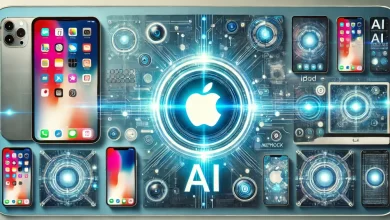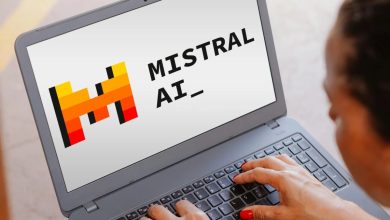Improving Retrieval Augmented Language Models: Self-Reasoning and Adaptive Augmentation for Conversational Systems

Two new approaches that have emerged in this field are self-reasoning frameworks and adaptive retrieval-augmented generation for conversational systems. In this article, we’ll dive deep into these innovative techniques and explore how they’re pushing the boundaries of what’s possible with language models.
The Promise and Pitfalls of Retrieval-Augmented Language Models
Before we delve into the specifics of these new approaches, let’s first understand the concept of Retrieval-Augmented Language Models (RALMs). The core idea behind RALMs is to combine the vast knowledge and language understanding capabilities of pre-trained language models with the ability to access and incorporate external, up-to-date information during inference.
Here’s a simple illustration of how a basic RALM might work:
- A user asks a question: “What was the outcome of the 2024 Olympic Games?”
- The system retrieves relevant documents from an external knowledge base.
- The LLM processes the question along with the retrieved information.
- The model generates a response based on both its internal knowledge and the external data.
This approach has shown great promise in improving the accuracy and relevance of LLM outputs, especially for tasks that require access to current information or domain-specific knowledge. However, RALMs are not without their challenges. Two key issues that researchers have been grappling with are:
- Reliability: How can we ensure that the retrieved information is relevant and helpful?
- Traceability: How can we make the model’s reasoning process more transparent and verifiable?
Recent research has proposed innovative solutions to these challenges, which we’ll explore in depth.
Self-Reasoning: Enhancing RALMs with Explicit Reasoning Trajectories

This is the architecture and process behind retrieval-augmented LLMs, focusing on a framework called Self-Reasoning. This approach uses trajectories to enhance the model’s ability to reason over retrieved documents.
When a question is posed, relevant documents are retrieved and processed through a series of reasoning steps. The Self-Reasoning mechanism applies evidence-aware and trajectory analysis processes to filter and synthesize information before generating the final answer. This method not only enhances the accuracy of the output but also ensures that the reasoning behind the answers is transparent and traceable.
In the above examples provided, such as determining the release date of the movie “Catch Me If You Can” or identifying the artists who painted the Florence Cathedral’s ceiling, the model effectively filters through the retrieved documents to produce accurate, contextually-supported answers.

This table presents a comparative analysis of different LLM variants, including LLaMA2 models and other retrieval-augmented models across tasks like NaturalQuestions, PopQA, FEVER, and ASQA. The results are split between baselines without retrieval and those enhanced with retrieval capabilities.

This image presents a scenario where an LLM is tasked with providing suggestions based on user queries, demonstrating how the use of external knowledge can influence the quality and relevance of the responses. The diagram highlights two approaches: one where the model uses a snippet of knowledge and one where it does not. The comparison underscores how incorporating specific information can tailor responses to be more aligned with the user’s needs, providing depth and accuracy that might otherwise be lacking in a purely generative model.
One groundbreaking approach to improving RALMs is the introduction of self-reasoning frameworks. The core idea behind this method is to leverage the language model’s own capabilities to generate explicit reasoning trajectories, which can then be used to enhance the quality and reliability of its outputs.
Let’s break down the key components of a self-reasoning framework:
- Relevance-Aware Process (RAP)
- Evidence-Aware Selective Process (EAP)
- Trajectory Analysis Process (TAP)
Relevance-Aware Process (RAP)
The RAP is designed to address one of the fundamental challenges of RALMs: determining whether the retrieved documents are actually relevant to the given question. Here’s how it works:
- The system retrieves a set of potentially relevant documents using a retrieval model (e.g., DPR or Contriever).
- The language model is then instructed to judge the relevance of these documents to the question.
- The model explicitly generates reasons explaining why the documents are considered relevant or irrelevant.
For example, given the question “When was the Eiffel Tower built?”, the RAP might produce output like this:
Relevant: True
Relevant Reason: The retrieved documents contain specific information about the construction dates of the Eiffel Tower, including its commencement in 1887 and completion in 1889.
This process helps filter out irrelevant information early in the pipeline, improving the overall quality of the model’s responses.
Evidence-Aware Selective Process (EAP)
The EAP takes the relevance assessment a step further by instructing the model to identify and cite specific pieces of evidence from the relevant documents. This process mimics how humans might approach a research task, selecting key sentences and explaining their relevance. Here’s what the output of the EAP might look like:
Cite content: "Construction of the Eiffel Tower began on January 28, 1887, and was completed on March 31, 1889."
Reason to cite: This sentence provides the exact start and end dates for the construction of the Eiffel Tower, directly answering the question about when it was built.
By explicitly citing sources and explaining the relevance of each piece of evidence, the EAP enhances the traceability and interpretability of the model’s outputs.
Trajectory Analysis Process (TAP)
The TAP is the final stage of the self-reasoning framework, where the model consolidates all the reasoning trajectories generated in the previous steps. It analyzes these trajectories and produces a concise summary along with a final answer. The output of the TAP might look something like this:
Analysis: The Eiffel Tower was built between 1887 and 1889. Construction began on January 28, 1887, and was completed on March 31, 1889. This information is supported by multiple reliable sources that provide consistent dates for the tower's construction period.
Answer: The Eiffel Tower was built from 1887 to 1889.
This process allows the model to provide both a detailed explanation of its reasoning and a concise answer, catering to different user needs.
Implementing Self-Reasoning in Practice
To implement this self-reasoning framework, researchers have explored various approaches, including:
- Prompting pre-trained language models
- Fine-tuning language models with parameter-efficient techniques like QLoRA
- Developing specialized neural architectures, such as multi-head attention models
Each of these approaches has its own trade-offs in terms of performance, efficiency, and ease of implementation. For example, the prompting approach is the simplest to implement but may not always produce consistent results. Fine-tuning with QLoRA offers a good balance of performance and efficiency, while specialized architectures may provide the best performance but require more computational resources to train.
Here’s a simplified example of how you might implement the RAP using a prompting approach with a language model like GPT-3:
import openai
def relevance_aware_process(question, documents):
prompt = f"""
Question: {question}
Retrieved documents:
{documents}
Task: Determine if the retrieved documents are relevant to answering the question.
Output format:
Relevant: [True/False]
Relevant Reason: [Explanation]
Your analysis:
"""
response = openai.Completion.create(
engine="text-davinci-002",
prompt=prompt,
max_tokens=150
)
return response.choices[0].text.strip()
# Example usage
question = "When was the Eiffel Tower built?"
documents = "The Eiffel Tower is a wrought-iron lattice tower on the Champ de Mars in Paris, France. It is named after the engineer Gustave Eiffel, whose company designed and built the tower. Constructed from 1887 to 1889 as the entrance arch to the 1889 World's Fair, it was initially criticized by some of France's leading artists and intellectuals for its design, but it has become a global cultural icon of France."
result = relevance_aware_process(question, documents)
print(result)
This example demonstrates how the RAP can be implemented using a simple prompting approach. In practice, more sophisticated techniques would be used to ensure consistency and handle edge cases.
While the self-reasoning framework focuses on improving the quality and interpretability of individual responses, another line of research has been exploring how to make retrieval-augmented generation more adaptive in the context of conversational systems. This approach, known as adaptive retrieval-augmented generation, aims to determine when external knowledge should be used in a conversation and how to incorporate it effectively.
The key insight behind this approach is that not every turn in a conversation requires external knowledge augmentation. In some cases, relying too heavily on retrieved information can lead to unnatural or overly verbose responses. The challenge, then, is to develop a system that can dynamically decide when to use external knowledge and when to rely on the model’s inherent capabilities.
Components of Adaptive Retrieval-Augmented Generation
To address this challenge, researchers have proposed a framework called RAGate, which consists of several key components:
- A binary knowledge gate mechanism
- A relevance-aware process
- An evidence-aware selective process
- A trajectory analysis process
The Binary Knowledge Gate Mechanism
The core of the RAGate system is a binary knowledge gate that decides whether to use external knowledge for a given conversation turn. This gate takes into account the conversation context and, optionally, the retrieved knowledge snippets to make its decision.
Here’s a simplified illustration of how the binary knowledge gate might work:
def knowledge_gate(context, retrieved_knowledge=None):
# Analyze the context and retrieved knowledge
# Return True if external knowledge should be used, False otherwise
pass
def generate_response(context, knowledge=None):
if knowledge_gate(context, knowledge):
# Use retrieval-augmented generation
return generate_with_knowledge(context, knowledge)
else:
# Use standard language model generation
return generate_without_knowledge(context)
This gating mechanism allows the system to be more flexible and context-aware in its use of external knowledge.
Implementing RAGate

This image illustrates the RAGate framework, an advanced system designed to incorporate external knowledge into LLMs for improved response generation. This architecture shows how a basic LLM can be supplemented with context or knowledge, either through direct input or by integrating external databases during the generation process. This dual approach—using both internal model capabilities and external data—enables the LLM to provide more accurate and contextually relevant responses. This hybrid method bridges the gap between raw computational power and domain-specific expertise.

This showcases performance metrics for various model variants under the RAGate framework, which focuses on integrating retrieval with parameter-efficient fine-tuning (PEFT). The results highlight the superiority of context-integrated models, particularly those that utilize ner-know and ner-source embeddings.
The RAGate-PEFT and RAGate-MHA models demonstrate substantial improvements in precision, recall, and F1 scores, underscoring the benefits of incorporating both context and knowledge inputs. These fine-tuning strategies enable models to perform more effectively on knowledge-intensive tasks, providing a more robust and scalable solution for real-world applications.
To implement RAGate, researchers have explored several approaches, including:
- Using large language models with carefully crafted prompts
- Fine-tuning language models using parameter-efficient techniques
- Developing specialized neural architectures, such as multi-head attention models
Each of these approaches has its own strengths and weaknesses. For example, the prompting approach is relatively simple to implement but may not always produce consistent results. Fine-tuning offers a good balance of performance and efficiency, while specialized architectures may provide the best performance but require more computational resources to train.
Here’s a simplified example of how you might implement a RAGate-like system using a fine-tuned language model:
import torch
from transformers import AutoTokenizer, AutoModelForSequenceClassification
class RAGate:
def __init__(self, model_name):
self.tokenizer = AutoTokenizer.from_pretrained(model_name)
self.model = AutoModelForSequenceClassification.from_pretrained(model_name)
def should_use_knowledge(self, context, knowledge=None):
inputs = self.tokenizer(context, knowledge or "", return_tensors="pt", truncation=True, max_length=512)
with torch.no_grad():
outputs = self.model(**inputs)
probabilities = torch.softmax(outputs.logits, dim=1)
return probabilities[0][1].item() > 0.5 # Assuming binary classification (0: no knowledge, 1: use knowledge)
class ConversationSystem:
def __init__(self, ragate, lm, retriever):
self.ragate = ragate
self.lm = lm
self.retriever = retriever
def generate_response(self, context):
knowledge = self.retriever.retrieve(context)
if self.ragate.should_use_knowledge(context, knowledge):
return self.lm.generate_with_knowledge(context, knowledge)
else:
return self.lm.generate_without_knowledge(context)
# Example usage
ragate = RAGate("path/to/fine-tuned/model")
lm = LanguageModel() # Your preferred language model
retriever = KnowledgeRetriever() # Your knowledge retrieval system
conversation_system = ConversationSystem(ragate, lm, retriever)
context = "User: What's the capital of France?\nSystem: The capital of France is Paris.\nUser: Tell me more about its famous landmarks."
response = conversation_system.generate_response(context)
print(response)
This example demonstrates how a RAGate-like system might be implemented in practice. The RAGate class uses a fine-tuned model to decide whether to use external knowledge, while the ConversationSystem class orchestrates the interaction between the gate, language model, and retriever.
Challenges and Future Directions
While self-reasoning frameworks and adaptive retrieval-augmented generation show great promise, there are still several challenges that researchers are working to address:
- Computational Efficiency: Both approaches can be computationally intensive, especially when dealing with large amounts of retrieved information or generating lengthy reasoning trajectories. Optimizing these processes for real-time applications remains an active area of research.
- Robustness: Ensuring that these systems perform consistently across a wide range of topics and question types is crucial. This includes handling edge cases and adversarial inputs that might confuse the relevance judgment or gating mechanisms.
- Multilingual and Cross-lingual Support: Extending these approaches to work effectively across multiple languages and to handle cross-lingual information retrieval and reasoning is an important direction for future work.
- Integration with Other AI Technologies: Exploring how these approaches can be combined with other AI technologies, such as multimodal models or reinforcement learning, could lead to even more powerful and flexible systems.
Conclusion
The development of self-reasoning frameworks and adaptive retrieval-augmented generation represents a significant step forward in the field of natural language processing. By enabling language models to reason explicitly about the information they use and to adapt their knowledge augmentation strategies dynamically, these approaches promise to make AI systems more reliable, interpretable, and context-aware.
As research in this area continues to evolve, we can expect to see these techniques refined and integrated into a wide range of applications, from question-answering systems and virtual assistants to educational tools and research aids. The ability to combine the vast knowledge encoded in large language models with dynamically retrieved, up-to-date information has the potential to revolutionize how we interact with AI systems and access information.




